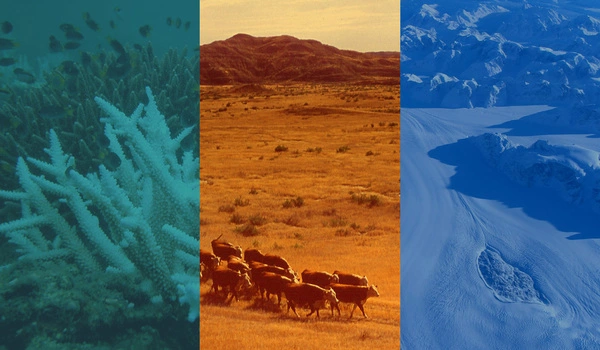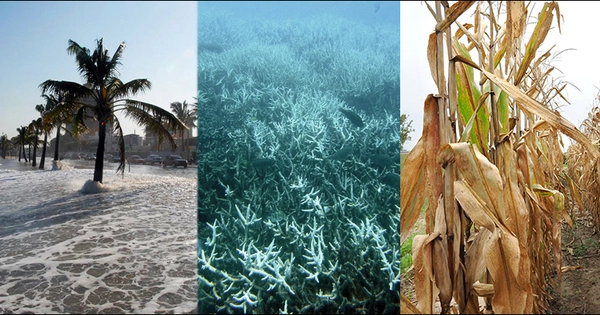Climate change is already having an impact on people’s access to water around the world, causing more severe droughts and floods. One of the primary causes of this problem is rising global temperatures. Climate change has an impact on the water cycle because it affects when, where, and how much precipitation falls. It also causes more severe weather events to occur over time.
A research team discovered that with global warming of approximately 2.5 degrees Celsius compared to pre-industrial levels over the next three decades, the Andean region of Chile could experience noticeable snow loss and roughly 10% less mountain water runoff. The study also shows that what happens in the Andes could be a harbinger of what is to come for the California Sierra Nevada mountain range and highlights the importance of carbon mitigation strategies to prevent this from occurring.
Snowcapped mountains are not only beautiful; they are also essential to a delicate ecosystem that has existed for tens of thousands of years. Mountain runoff and snowmelt flow to streams, rivers, lakes, and oceans, and today, a quarter of the world relies on these natural “water towers” to replenish downstream reservoirs and groundwater aquifers for urban water supplies, agricultural irrigation, and ecosystem support.
However, this valuable freshwater resource is in danger of becoming extinct. The Earth is now about 1.1 degrees Celsius (1.9 degrees Fahrenheit) warmer than it was before the Industrial Revolution, and mountain snowpacks are shrinking. Last year, a study co-led by Alan Rhoades and Erica Siirila-Woodburn, research scientists in the Earth and Environmental Sciences Area of Lawrence Berkeley National Laboratory (Berkeley Lab), discovered that if global warming continues along the high-emissions scenario, low-to-no-snow winters will become a regular occurrence in western U.S. mountain ranges in 35 to 60 years.
These findings are quite shocking. We assumed that both the southern and northern hemispheres would respond similarly to climate change, and that the Andes would be more resilient due to their high elevation.
Alan Rhoades
Now, a research team led by Rhoades discovered in a recent Nature Climate Change study that if global warming reaches around 2.5 degrees Celsius above pre-industrial levels, mountain ranges in the southern midlatitudes, particularly the Andean region of Chile, will face a low-to-no-snow future between the years 2046 and 2051 or 20 years earlier than mountain ranges in the northern midlatitudes such as the Sierra Nevada or Rockies. (Low-to-no snow occurs when the annual maximum water stored as snowpack for a decade or more is in the bottom 30% of historical conditions.) The researchers also discovered that low-to-no-snow conditions would emerge in the southern midlatitudes at one-third the rate that they would in the northern midlatitudes.
“These findings are quite shocking. We assumed that both the southern and northern hemispheres would respond similarly to climate change and that the Andes would be more resilient due to their high elevation” Alan Rhoades, the new study’s lead author and a hydroclimate research scientist in Berkeley Lab’s Earth and Environmental Science Area. “This demonstrates that not every degree of warming has the same effect in each region.”
Another significant finding was that a low-to-no-snow future corresponds with roughly 10% less mountain runoff in both hemispheres, during wet and dry years.
“If you expect 10% less runoff, that means there’s at least 10% less water available every year to refill reservoirs in the summer months when agriculture and mountain ecosystems most need it,” Rhoades said.

Such diminished runoff would be particularly devastating for agricultural regions already parched by multiyear droughts.
California’s current drought is entering its fourth year. According to the U.S. Drought Monitor, more than 94 percent of the state is in severe, extreme, or exceptional drought. Shrinking groundwater supplies and municipal wells throughout the state are severely impacting the San Joaquin Valley, the state’s agricultural heartland. And Chile which exports approximately 30% of its fresh fruit production every year, with much of it shipped to the United States is in the midst of a historic 13-year drought.
Saving snow, freshwater by curbing greenhouse gas emissions
But the new study also suggests that low-to-no-snow in both the northern and southern midlatitude mountain ranges can be prevented if global warming is limited to essentially 2.5 degrees Celsius (4.5 degrees Fahrenheit), the researchers said.
Their analysis is based on Earth system models that simulate the various components of the climate, such as the atmosphere and land surface, to determine how mountain water cycles may continue to change into the twenty-first century, and what warming levels may give rise to a widespread and persistent low-to-no-snow future across the American Cordillera – a chain of mountain ranges spanning the western “backbone” of North America, Central America, and South America.
The researchers used computing resources at Berkeley Lab’s National Energy Research Scientific Computing Center (NERSC) to process and analyze data collected by climate researchers from all over the world through the Department of Energy’s CASCADE (Calibrated & Systematic Characterization, Attribution, & Detection of Extremes) project. (Post-analysis data from the study is available to the research community at NERSC.)
Between 2012 and 2016, California experienced what Rhoades and his team considered “episodic low-to-no snow” conditions. The lack of snow and drought conditions in these years demonstrated the vulnerability of our water supply, which led to the passage of the California Sustainable Groundwater Management Act, new approaches to water and agricultural management practices, and mandatory water cuts, according to Rhoades.
Persistent low-to-no snow (10 years in a row) has yet to occur, but Rhoades said that water managers are already thinking about such a future. “They’re collaborating with scientists to come up with strategies to proactively rather than reactively manage water resources for the worst-case scenarios if we can’t mitigate greenhouse gas emissions to avoid certain warming levels. But the better strategy would be to prevent further warming by cutting greenhouse gas emissions,” he said.
For future studies, Rhoades plans to continue to examine and run new Earth system model simulations at even higher resolution “to give more spatial context of when and where snow loss might occur and what causes it,” he said, and investigate how every degree of warming might change other key drivers of the mountain-water cycle, such as the landfall location and intensity of atmospheric rivers, and mountain ecosystem responses.
He also plans to continue working with water managers through the Department of Energy-funded HyperFACETS project to identify new management strategies such as infrastructure hardening against drought and floods and managed aquifer recharge to better prepare for a low-to-no snow future.
Rhoades is upbeat, citing research from another Berkeley Lab-led study that found that zero net carbon dioxide emissions from energy and industry by 2050 can be achieved by rebuilding the United States’ energy infrastructure to run primarily on renewable energy.
















